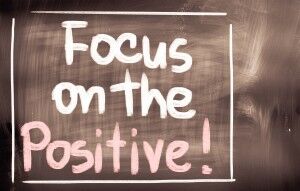By Maren Perry, MA, PCC
People move toward what they focus on. We know this is true, we naturally advise kids to “keep your eye on the ball” to increase their chance of hitting or catching it. It’s the same in life: you will move your life toward the things you focus on.
 If you spend your time worrying about how you never measure up to expectations, you will be focused on all the things that are WRONG, all the things that are BROKEN, and all the ways in which you have FAILED.
If you spend your time worrying about how you never measure up to expectations, you will be focused on all the things that are WRONG, all the things that are BROKEN, and all the ways in which you have FAILED.
And yet, this is where many companies spend their time: What’s wrong? What’s not working? How do we fix it? This model assumes that focusing on the weakest elements will produce better results. It imagines that there’s a pint at which all the errors can be fixed and that then things will run smoothly. That’s the best case scenario, that somehow al the errors get fixed.
The unintended outcome of this approach, is that it creates a culture where we focus on the negative, and where the company is one big thing that needs fixing. Over time, this creates a culture of negativity and a downward spiral of thought.
Focusing on weaknesses, whether as a company or individual, gives us the best case scenario of things simply no longer being broken… and it just doesn’t feel very good!
Tom Rath who wrote Stengthsfinder 2.0 (great online test – go here to try) talked about it this way: if the things we focus on and put work behind increase exponentially in effectiveness (say they get five times better if we apply energy to them and work on them) then are we better off applying our work effort to those things that we’re weakest at, where we score say a 1 out of five for natural ability? Or are we better off applying our efforts to the area where we’re naturally strong, say a 5 out of five? In the first case, all our work pays off with getting us from a 1 to a 5. In the second example, we go from a 5 to a 25! Our work effort is maximized by leveraging it on our strengths, rather than our weaknesses.
This is the idea behind Appreciative Inquiry (a model for analysis, decision-making and the creation of strategic change, particularly within companies and other organizations. It was developed at Case Western Reserve University’s department of organizational behavior, starting with a 1987 article by David Cooperrider and Suresh Srivastva.) While the model for organizational change is too elaborate to delve into here, the basic concept is simple: focus on the positives and leverage them to move toward your ideal. We use this concept in coaching frequently.
1. Discover: What are your core strengths? (Either individually or as a company?) What qualities are you at your best?
2. Dream: What is your ideal? (A.k.a. where do you want to go?) What do you see in the future that calls to you?
3. Design: What are the steps you see to get you to that goal? What needs to be put in place to make it a reality?
4. Destiny: put those steps in place, and keep iterating to improve the process. Keep asking appreciative question to move forward.
This process focuses a company or individual on the destination they desire, rather than asking them to look back and fix what’s broken. Since we all move toward what we focus on, this has the organization moving in a positive direction. The offshoot is a positive culture, one with energy and appreciation behind it.
Imagine for yourself: what is possible for you if you start focusing on what you want, rather than what you don’t? How might it change your actions, attitude, or results?
____________________________________________________________________________________________________________________
Contact us for a complimentary consult on Appreciative Inquiry and what it can do for you and your organization.
